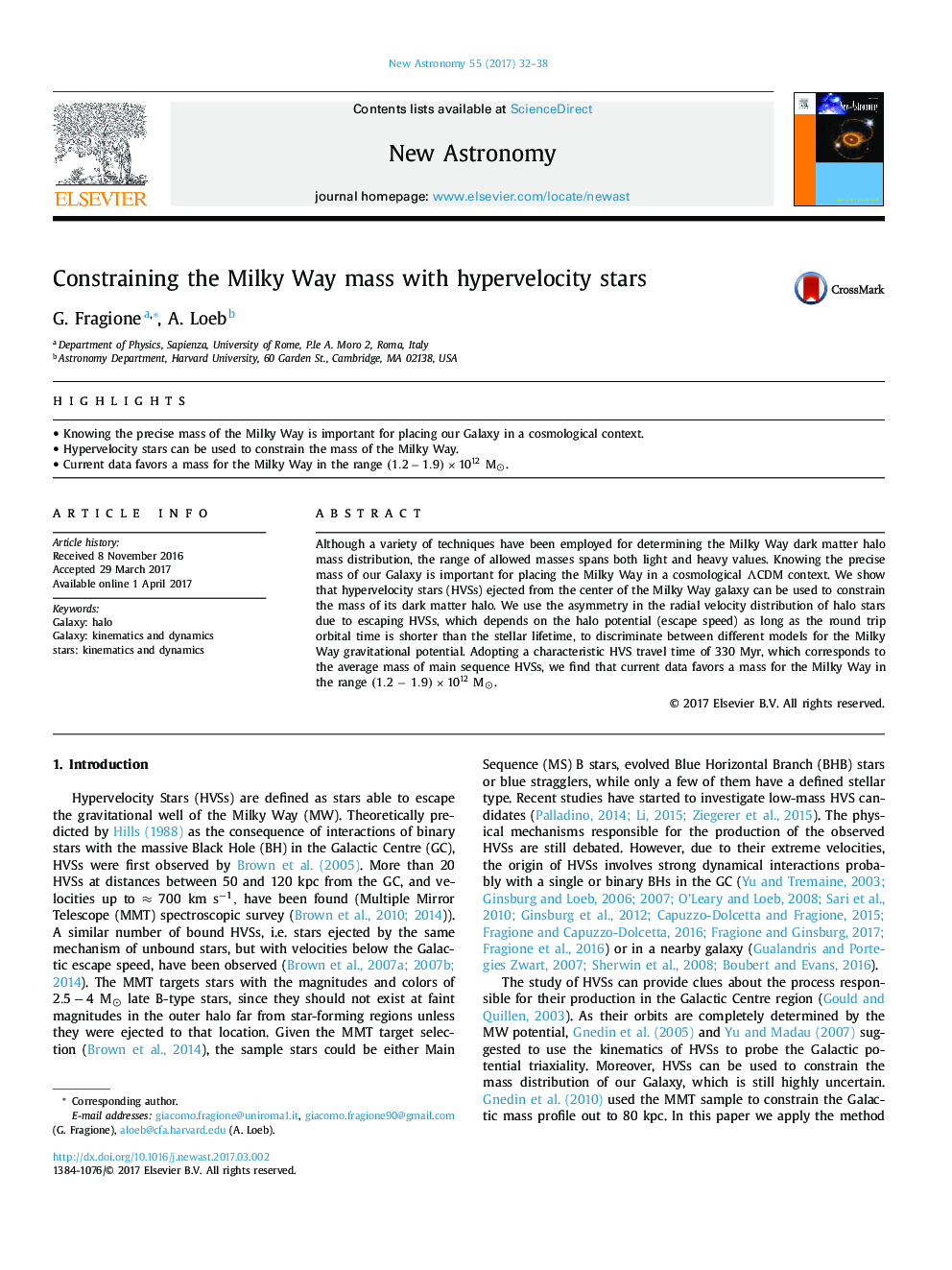| Article ID | Journal | Published Year | Pages | File Type |
|---|---|---|---|---|
| 5487818 | New Astronomy | 2017 | 7 Pages |
Abstract
Although a variety of techniques have been employed for determining the Milky Way dark matter halo mass distribution, the range of allowed masses spans both light and heavy values. Knowing the precise mass of our Galaxy is important for placing the Milky Way in a cosmological ÎCDM context. We show that hypervelocity stars (HVSs) ejected from the center of the Milky Way galaxy can be used to constrain the mass of its dark matter halo. We use the asymmetry in the radial velocity distribution of halo stars due to escaping HVSs, which depends on the halo potential (escape speed) as long as the round trip orbital time is shorter than the stellar lifetime, to discriminate between different models for the Milky Way gravitational potential. Adopting a characteristic HVS travel time of 330Â Myr, which corresponds to the average mass of main sequence HVSs, we find that current data favors a mass for the Milky Way in the range (1.2â1.9)Ã1012Mâ.
Related Topics
Physical Sciences and Engineering
Physics and Astronomy
Astronomy and Astrophysics
Authors
G. Fragione, A. Loeb,
